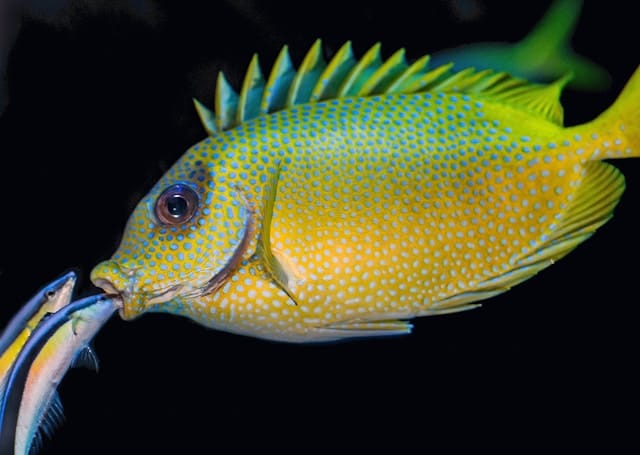How to Properly Set Up an In-Home Quarantine Area for Sick Fish?

Anyone with a freshwater fish tank will tell you that their aquatic pets are more than just attractive display pieces. They’re a responsibility, a hobby, and sometimes even a member of the family. In your role as a fish keeper, you want to provide the best care for your finned friends. But what happens when they fall ill? The sick fish require special attention, which includes setting up a quarantine tank. This tank serves as a safe space for ill fish to recover away from the main tank without spreading disease to other fish. Let’s discuss how to properly set this up.
1. Selecting the Quarantine Tank
Before you plunge into setting up a quarantine area for your sick fish, you need to select an appropriate tank. Ideally, a quarantine tank should be smaller than your main tank. The size, however, will mainly depend on the size and number of fish that need to be quarantined. For most freshwater aquariums, a 10 to 20-gallon tank should suffice.
En parallèle : What’s the Best Approach to Socialize a Rabbit with Other Household Pets?
The tank should be bare and simple. Avoid adding any substrate or decor, as they can harbor harmful bacteria and make the tank harder to clean. The main focus here is the health of your fish, not the aesthetics of the tank.
2. Setting up the Quarantine Tank
Setting up the quarantine tank is an important step in the process. Since the health of the sick fish is at stake, you want to ensure that the tank is as conducive as possible for recovery. Here’s how to go about it:
A voir aussi : How to Create a Nutrient-Rich Diet Plan for a Parakeet?
Adding Water: The water in the quarantine tank should ideally be the same as that in the main tank. This ensures that the sick fish do not have to adjust to a new water condition, causing further stress. You can add water from your main tank to the quarantine tank. Ensure you treat tap water with a water conditioner before adding it to the tank.
Installing the Filter: The filter is a crucial component of any fish tank. For a quarantine tank, a sponge filter is the best choice. Sponge filters provide both mechanical and biological filtration, and they are gentle enough not to harm sick fish. These filters also harbor beneficial bacteria, which help in breaking down toxins produced by the fish.
3. Managing the Water Parameters
Maintaining a stable environment in the quarantine tank is vital for the recovery of the sick fish. Regularly monitor the water parameters, such as temperature, pH, ammonia, nitrites, and nitrates.
Maintain the water temperature within the suitable range for your specific fish species. Use a heater if necessary. Maintain a stable pH level that is suitable for your fish species. The ammonia, nitrite, and nitrate levels should ideally be zero. Use water test kits to monitor these parameters.
Regular water changes will also help keep the water parameters stable. Replace about 25 to 50 percent of the water every few days, depending on the severity of the fish’s illness.
4. Administering Medications
When it comes to treating the sick fish, the quarantine tank plays a significant role. Administer the required medications directly into the quarantine tank.
Understand that different diseases require different treatments. Consult with a fish veterinarian or an expert at a fish store to understand the right medication course for your sick fish.
Ensure to follow the instructions on the medication label meticulously. Overdosing can cause more harm than good.
5. Monitoring the Fish
Lastly, keep a close eye on your quarantined fish. Monitor their behavior, eating habits, and any changes in their physical appearance.
Isolation can be stressful for fish, so ensure that the quarantine period is not prolonged unnecessarily. Once the fish recovers, acclimate it back to the main tank using the same process as when you first introduced it.
Remember, the quarantine tank isn’t just for sick fish. It’s also useful when introducing new fish to your main tank. Use the quarantine tank to observe new fish for any signs of disease before adding them to the main tank. This can prevent the spread of diseases to your main tank.
In conclusion, a quarantine tank is a crucial part of fishkeeping. It allows you to treat sick fish effectively without the risk of spreading diseases to the other fish in your main tank. With careful setup and management, your quarantine tank can be a lifesaver for your aquatic pets.
6. Maintaining the Quarantine Tank
Keeping your quarantine tank in top condition is essential for the wellbeing of your quarantined fish. A clean tank will enhance their recovery process and maintain a stable environment. Typically, this involves ensuring the water quality is consistently high and that the filter media is clean.
You will need to perform regular water changes to eliminate any waste products and to replace any water lost through evaporation. A good rule of thumb is to change about 10% to 20% of the water every week, depending on the size of your tank and the number of fish in it. Always replace the water with treated tap water or water from your main tank to maintain similar water conditions.
Cleaning the filter media is also crucial. Depending on the type of filter you use, this might involve rinsing the sponge filter in tank water to remove any debris or replacing the filter media entirely. However, be careful not to rinse or replace all the filter media at once, as the beneficial bacteria living on the media are crucial for maintaining a stable biological environment in your tank.
Remember, a well-maintained quarantine tank is not just beneficial for your sick fish. It can also be used for quarantining new fish before introducing them to your main tank, thus protecting your main tank fish from potential diseases.
7. Conclusion: The Importance of a Quarantine Tank
In the world of aquaristics, having a quarantine tank is not an option, but a necessity. Whether you’re a keeper of freshwater fish or saltwater fish, a quarantine tank can be a lifesaver for your aquatic pets. By separating sick fish into a controlled environment, you’re not only giving them a better chance at recovery but also protecting the health of your other fish in the main tank.
Through meticulous setup and rigorous maintenance, your quarantine tank will serve as a safe haven for sick fish, and a stepping stone for new fish. It allows you to closely monitor the fish health, administer necessary treatments, and control the water quality tailored to the needs of the sick fish.
Remember, the goal isn’t to have the most aesthetically pleasing hospital tank, but rather to provide a conducive and stable environment for recovery. With diligent care and appropriate treatments, your sick fish can quickly recover and return to their usual vibrant selves in the display tank.
In this guide, we’ve discussed how to set up and manage a quarantine tank, from selecting the right tank to maintaining the water quality, and more. So, the next time your fish falls ill or you’re introducing new fish to your tank, you’ll be well-prepared to handle the situation properly. Keep these tips in mind, and you’ll be on your way to becoming a more responsible and successful fish keeper.
